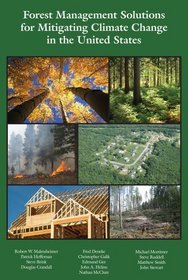Search -
Forest Management Solutions for Mitigating Climate Change in the United States
Forest Management Solutions for Mitigating Climate Change in the United States
Author:
Unique among all possible options for mitigating climate change, forests and forestry can both prevent and reduce emissions of greenhouse gases and simultaneously provide essential environmental, social, and economic benefits-from clean water and wildlife habitat to outdoor recreation and forest products. This book lays out the possibilities... more »
Author:
Unique among all possible options for mitigating climate change, forests and forestry can both prevent and reduce emissions of greenhouse gases and simultaneously provide essential environmental, social, and economic benefits-from clean water and wildlife habitat to outdoor recreation and forest products. This book lays out the possibilities... more »
ISBN-13: 9780939970964
ISBN-10: 0939970961
Publication Date: 3/17/2009
Pages: 156
Rating: ?
ISBN-10: 0939970961
Publication Date: 3/17/2009
Pages: 156
Rating: ?
0 stars, based on 0 rating
Publisher: Society of American Foresters
Book Type: Paperback
Members Wishing: 0
Reviews: Amazon | Write a Review
Book Type: Paperback
Members Wishing: 0
Reviews: Amazon | Write a Review




